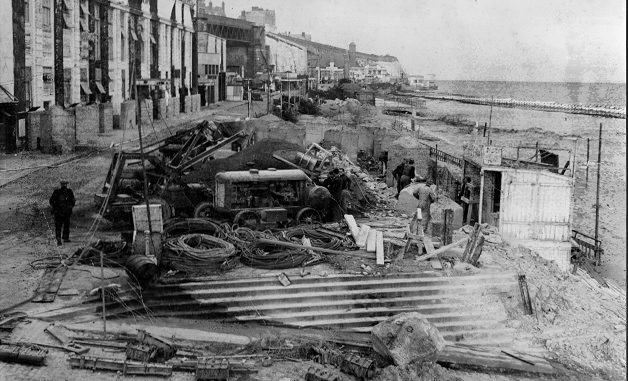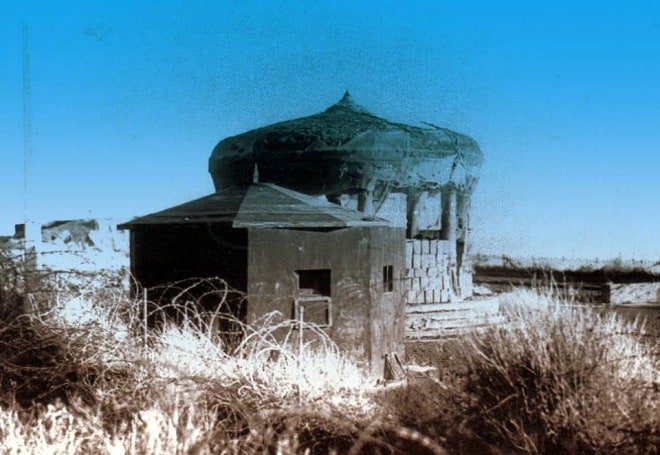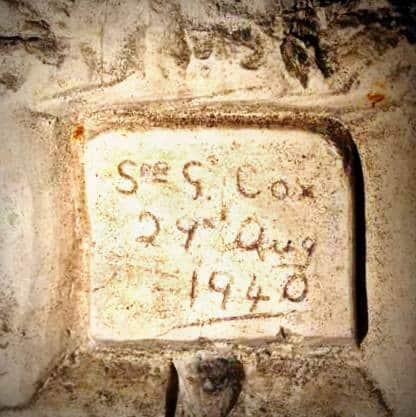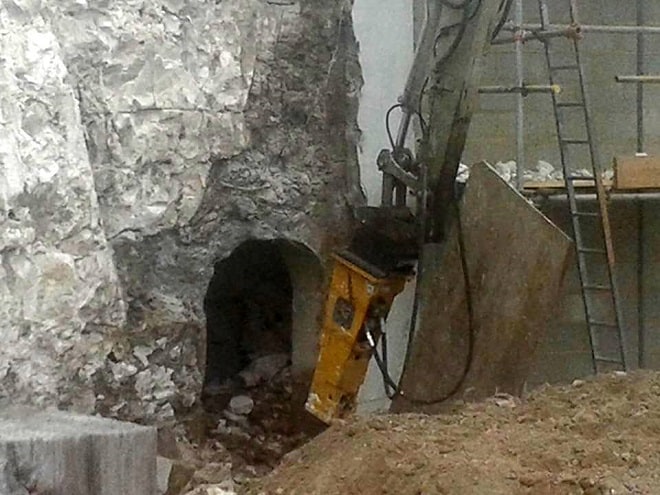
Ramsgate’s close proximity to the continent, has meant in times of war, the population has had to form a close relationship with the Royal Navy.
With the outbreak of the Second World War, Ramsgate’s inhabitants welcomed their naval guests once again with the formation of shore base HMS Fervent.
An official flag raising ceremony took place on October 10, 1939 and various buildings across Ramsgate’s waterfront were requisitioned.
Fervent’s officers were housed in the grand Royal Temple Yacht Club; accompanied by their wardroom and the bases intelligence library. The ratings were billeted in the old buildings of the ‘Merrie England’, funfair (latterly the Pleasurama site). The former bar area and dance floor were converted into the mess decks. The chalk cliffs, which already housed the town’s expansive air raid shelters, had fresh incisions made to make room for the base’s communications centre and storage facilities. The entrance to these tunnels has since been sealed off. The tunnels remain however, covered with graffiti drawn by servicemen long ago.

Fervent’s initial tasking of contraband control, is one which has received scant attention in the history books which have followed. Contraband control itself came into effect on September 4, 1939, when the Admiralty announced that all merchant vessels were now liable for examination, by the naval contraband control service and any goods bound for Germany subject to seizure.
Given the magnitude of the necessary preparations, the required bases including Fervent were not operational until October. While on hold, selected vessels were held between Deal and the Goodwin Sands, with requisitioned Thames tugs on hand to transport the boarding teams to the waiting vessels.
To carry out searches there were just 42 naval personnel between Ramsgate and Margate by the end of 1939. Many were older, less active reservists, supplemented by inexperienced men, called up for wartime service. The dedication of those initial 42 sailors should not be forgotten. From October 1939 to April 1940 they searched 937 vessels, of which 98 were seized, denying Germany’s war effort thousands of tonnes of supplies.

H.M.S Fervent’s finest hour came in late May 1940, with the start of one of the most famous episodes of the Second World War, Operation Dynamo. With Allied forces, forced to retreat to the town of Dunkirk, the order soon came to prepare for evacuation. Preparations began across the country; with Ramsgate becoming a hive of activity, and the ranks of H.M.S Fervent swelled to some 650 naval personnel, under the Command of Captain W.R. Phillimore. He was ordered to make all possible provision for the assembling, maintenance and repairs for the small naval and civilian vessels, which were soon to descend on the harbour. The vast majority of the vessels being assembled at Ramsgate were the now famous Little Ships.
Over the next nine days, from May 26 to June 4, Fervent’s sailors alongside their civilian counterparts worked tirelessly to rescue some 41,327 Allied servicemen.
Following the success of Operation Dynamo, Fervent’s role changed once again, this time supporting vessels engaged on anti-invasion patrols. In January 1941, the role changed for the last time with Ramsgate becoming the overflow base to Dover for units of the Coastal Forces.

With vessels that carried the nickname ‘Spitfires of the Sea’, the crews were quickly engaged in fighting deadly cat and mouse games with German E-Boats, helping to defend the vital shipping lanes of the English Channel.
Most of Ramsgate’s Motor Torpedo and Motor Gun Boat crews were made up not only of British personnel, but Polish, Dutch, French and Canadians too. Collectively they played their part in some of the most important actions of the war. Including the ill-fated Channel Dash and the triumphant D-Day landings.
The vast majority of H.M.S Fervent’s history, however, is yet to be written as many of the official records have been either destroyed or misplaced.
I now turn this article over to you. If you have any family connections, documents or photographs relating to Fervent, then I would be delighted to hear from you. You can get in touch via the following email address [email protected]

